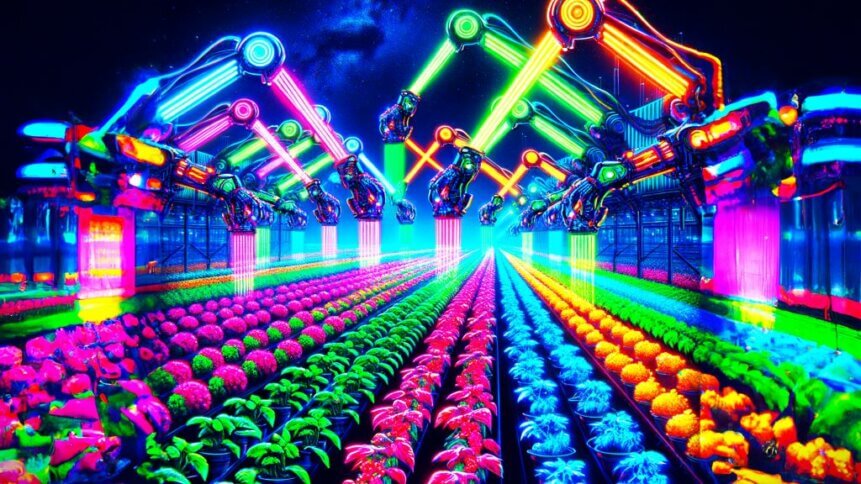Food tech – digitization unlocks efficiency gains in production

|
Getting your Trinity Audio player ready...
|
We’ve all got to eat, and so food production should be a lucrative business to be in. But as an industry, some argue that food costs more than it earns when you take into consideration the medical costs associated with bad diets. Plus, there’s the impact that food production has on the planet and its resources. However, there’s a glimmer of hope, and that operational lifeline could be food digitization.
“Digitization is a way that we can drive the efficiencies to do it,” Rini Greenfield – a Founding General Partner at Rethink Food, a VC firm supporting the digitization and decarbonization of the food system – points out. “If you want to solve climate change, you cannot ignore what is a third of the problem.”
The fact that VC firms have become interested in food is encouraging for those who believe in market forces. When it becomes profitable to save the planet, there’ll be no shortage of investment. However, things are far from perfect currently.
“This food system that we have today is excellent at distributing calories, but it is terrible at distributing nutrition,” Greenfield cautions.
Rethink Food is investing its multimillion-dollar fund in early-stage food and agtech companies, which are digital-first with a computational front end. Examples include Gro Intelligence, which Greenfield dubs ‘the Bloomberg of agriculture and climate’.
The thinking is that access to better information gives producers more opportunities to plan ahead – software platforms will be increasingly important to help businesses build climate resilience into their operations. But food digitization helps in other ways as well, and this gets to Greenfield’s first comment about driving efficiency.
One of the reasons that manufacturing has seen mass automation is because repetitive, step-by-step processes are tailor-made for it. Knowledge work, in comparison, is a much messier mix of tasks. And it’s why raising the productivity of a law firm is harder than trying to get a factory to make more widgets. That being said, generative AI promises to do for knowledge work what robots have done for factories (and for more on this, Hamish McRae’s ‘The World in 2050’ is a useful read).
Similarly, food digitization sets the scene for deploying computing power and software to produce more with less, faster, and at a scale that traditional methods can’t match.
Industrialization of the grocery store
On TechHQ, we’ve written about how grocery stores are integrating compact warehouse automation technology into their operations to reduce the cost of order picking. It’s a trend that analysts believe will continue with traditional supermarkets looking more like fulfillment centers to grow profits from customers ordering online.
Bristol, UK, is one of many cities with so-called ‘dark supermarkets’ where only staff walk up and down aisles stocked with fast-selling essentials and popular comfort food. Outside, wait delivery drivers with no walk-in customers in sight. Digital food shoppers prefer to let their groceries come to them, and the proportion of in-store customers could decline substantially as supermarket digitization ramps up.
Absolute primer on digitization of food industry from @zbfuss via @patrick_oshag @InvestLikeBest #DigitalTransformation #tech #Grocery https://t.co/IrmaS1yUZ5
— Curtis Kopf (@ckopf1) January 12, 2021
Supporting the growth in online orders is an ecosystem of food delivery apps, which pay great attention to user-experience and leverage other digital smarts such as gamification that encourages drivers to accept more pick-ups. Delivery apps provide lead generation for grocery stores and give supermarkets and restaurants the opportunity to micro-target their online audience.
Technology can provide a huge revenue boost to independent food businesses, which would otherwise have struggled to compete with bigger chains. But food digitization isn’t purely about chasing profits. There’s scope to reduce the environmental impact of food production and grow produce with bespoke nutritional profiles.
Growing microgreens to order
For example, researchers in Italy – in collaboration with agtech firm Ortogourmet – have demonstrated that it’s possible to grow microgreens to order, customizing nutrition profiles on a large scale. The team grew crops of radish, pea, rocket, and chard, focusing on two nutrients in particular – iodine and potassium.
Rather than fortify table salt with iodine – a common strategy used to combat iodine deficiency – the group showed how it was possible to elevate iodine levels in microgreens, which is beneficial to those who have to watch their sodium intake.
As well as raise nutrient levels, it was also possible to reduce the amount of unwanted elements – by 45%, in the case of potassium. “Since vegetables contain high concentrations of potassium, patients with impaired kidney function are sometimes advised not to eat vegetables, or that they should be soaked in water and boiled to reduce the potassium content through leaching,” explain the scientists involved in the work.
All of the microgreens were grown using a liquid medium in place of soil, which paved the way for better control over food production with more predictable yields thanks to the climate-controlled environment.
And, just like how dark supermarkets and ghost kitchens benefit from being sited in lower rent city locations, metro adjacent greenhouses and highly-efficient plant growing facilities could also turn out to be profitable in these spaces.
Food digitization could end up bringing the farm closer to the city, maximizing land use, and reducing food miles, which is an appetizing thought for urbanites.









